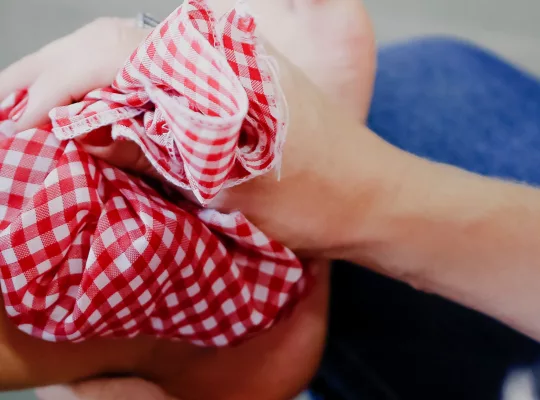Disposable Medical Gloves were first mass-produced by rubber manufacturer Ansell in 1964. They have since become one of the most widely utilized tools in healthcare. As the market for personal protection continues to grow, the production of single-use gloves grows as well. There is an increasing demand for varying sizes, styles, and materials. On E-FirstAidSupplies.com, we stock the three most widely utilized materials – latex, vinyl, and nitrile (all powder-free!) gloves. These different options allow you to choose what is best for you. Factors to consider may be allergies, comfort, durability, resistances, and much more. Staying informed on the different features of each material can help you decide which disposable glove is best.

Latex Gloves
To this day, latex disposable gloves remain the most popular style of gloves due to their fit, flexibility, and durability. Of the three popular materials, latex is the only material that they naturally source; that being said, they also have a high amount of proteins that cause allergic reactions. These reactions are generally provoked by repeated exposure to latex products. Although you might prefer latex, many choose nitrile or vinyl gloves due to their allergies.
Depending on the severity of the allergy, it could worsen the condition of the patient (allergic reactions can be as severe as anaphylaxis). It may impair the wearer from providing their best care. Contact dermatitis can cause dry and itchy irritations on the skin. It can also increase the chance of infections and pathogens entering the immune system. Being aware of your own and the patient’s latex allergy status is important when utilizing this material disposable glove. Despite the possibility of an allergic reaction, latex gloves are a durable and reliable option. This is true for personal protection in the medical field, cleaning work, industrial applications, auto repair, and many others.
Nitrile Gloves
Nitrile disposable gloves were designed (and first mass-produced in glove form in the 1990s) as a latex substitute. NBR (A different name for nitrile) is a synthetic form of rubber. They offered a similar performance but boasting a heightened chemical resistance. Nitrile gloves also offer incredibly high resistance to different oils. Being a synthetic material, nitrile contains no proteins or allergens, making it worry-free in terms of allergic repercussions. Nitrile gloves (often black) are the choice of the hair, nail, and tattoo industries. Nitrile gloves are the most expensive to manufacture, making them the most expensive to purchase – however, if you are allergic to latex and want to eliminate that risk but want the same quality performance, there is no substitute like nitrile.
Vinyl Gloves
They synthesized Vinyl disposable gloves from plastic as a more affordable option to natural latex and nitrile. They also developed disposable vinyl gloves to reduce the risk of an allergic reaction during use, as well as to provide a safe and disposable alternative to use where latex couldn’t be. Performance-wise, vinyl is the weakest – because it has a lower elasticity than nitrile and latex, it is easier to tear and puncture, making it risky to wear in medical, chemical, or biohazard situations. Vinyl is still an affordable, protective, and non-allergen alternative for low-risk applications such as food handling.

In Summary…
Your choice of disposable gloves will depend greatly on your intended application, but doing your research will undoubtedly lead to the right decision. If there are certain allergies that you need to beware of, this will affect your decision. Check out our selection of medical gloves in latex, vinyl, and nitrile.





